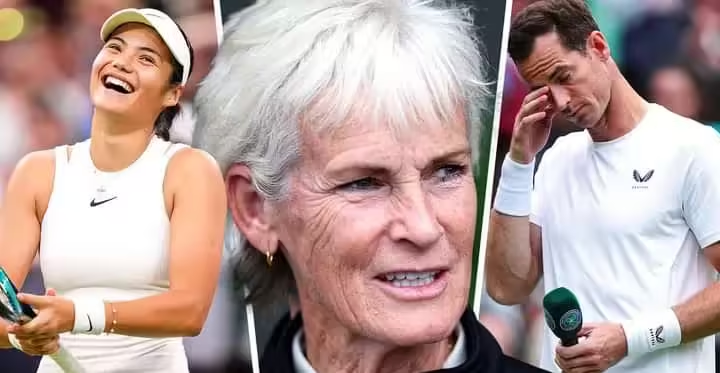The “snub” of Andy Murray by fellow British tennis star Emma Raducanu, particularly the decision to avoid forming a partnership in mixed doubles events, has sparked conversations not only among fans but also within the sports finance community. A sports finance expert has recently weighed in on the situation, revealing the potential financial implications of Raducanu’s decision. The analysis suggests that her choice may have come with a significant cost, not just in terms of missed opportunities on the court but also in terms of financial gains and broader marketability.
### Missed Sponsorship and Brand Opportunities
One of the biggest financial impacts of Raducanu’s decision lies in missed sponsorship deals. Andy Murray, a global tennis icon, commands respect and recognition across the sports world, and a partnership between him and Raducanu could have opened doors to lucrative sponsorship agreements. Both players are already well-established in terms of endorsements—Murray with brands like Under Armour and Jaguar, and Raducanu with luxury labels like Tiffany & Co. However, a mixed doubles pairing between two of Britain’s most prominent tennis players would have created a marketing spectacle that brands would be eager to capitalize on.
A joint appearance in high-profile tennis events like Wimbledon or the US Open would likely attract the attention of sponsors seeking to associate their products with both the experience and rising talent (Raducanu) as well as established success (Murray). The combination of their contrasting yet complementary narratives—Murray as the veteran champion and Raducanu as the young breakout star—could have created a unique and appealing story for brands. The sports finance expert suggests that the lack of this partnership could mean lost opportunities worth millions in sponsorship deals for both players.
### Missed Ticket and Viewership Revenue
Another financial aspect is the missed revenue in terms of ticket sales and viewership. Tennis fans are always excited to see unique partnerships, particularly in mixed doubles. A Murray-Raducanu pairing at a major tournament would have undoubtedly drawn significant attention from the British public and international viewers alike. This increased attention would translate into higher ticket sales, TV ratings, and viewership streams. Tennis tournaments and broadcasters thrive on creating compelling narratives, and a British mixed doubles team featuring two top-tier athletes would have been an easy sell.
Additionally, tournament organizers could have leveraged this star power to increase media coverage and attract bigger sponsorships themselves, which often trickles down to the players in terms of bonuses and prize money.
### Long-term Marketability and Legacy
From a legacy and long-term marketability perspective, forming a doubles partnership with Murray could have helped Raducanu further cement her place in British tennis history. While she made headlines globally with her historic US Open victory in 2021, maintaining a sustained presence in the sport is crucial to building a lasting brand. Murray’s influence, both as a player and a mentor figure, could have added depth to Raducanu’s own story, showing her willingness to collaborate with a tennis legend and connect with the larger history of British tennis. This might have helped her appeal to a wider range of audiences, including older generations of tennis fans who admire Murray’s achievements.
### Conclusion
While Raducanu may have her reasons for opting not to play mixed doubles with Murray, the financial implications of this decision are clear. The potential for increased sponsorship deals, higher ticket sales, and stronger marketability are all significant factors in the sports business world. As the expert highlighted, Raducanu’s choice may have cost her millions in both immediate and long-term earnings, while also potentially missing out on a partnership that could have created a lasting legacy in British tennis.
